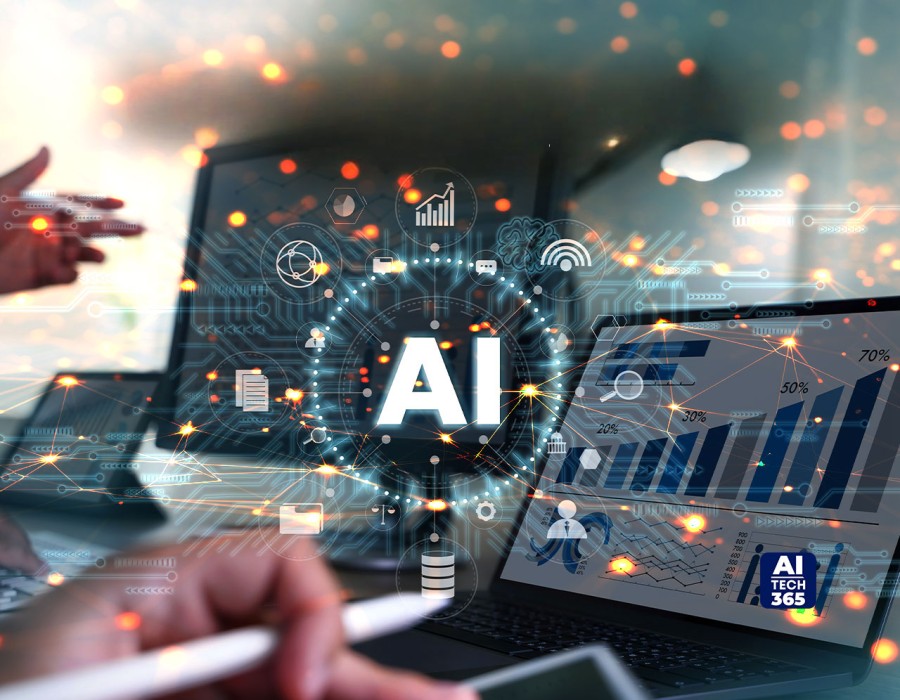Ever wonder how your smartphone instantly recognizes your face, bypassing the need for a password? This is made possible by AI-driven computer vision technology. This advanced technology deciphers visual information based on data it has learned, identifying patterns and shapes within images, though not in the same way humans do. AI’s influence on computer vision is profound, and it’s integrated into many aspects of our daily lives and various industries.
The AI in computer vision market is projected to soar to $206.33 billion by 2030. Let’s explore the inner workings and applications of this booming industry.
What is Computer Vision in AI?
Computer vision, a subset of AI, refers to the technology that enables machines and systems to extract meaningful information from digital images, videos, and other visual inputs. It allows computers to "see," observe, and understand the visual world in a way that mimics human perception. By leveraging AI and machine learning (ML) models, computer vision enables machines to capture, analyze, and interpret visual data efficiently.
This technology is essential across various applications, including object detection, facial recognition, image classification, and monitoring systems. Computer vision in AI is transforming industries by automating processes, enhancing decision-making, and enabling machines to interact with the visual world.
How AI Powers Computer Vision
AI, particularly machine learning, is the driving force behind computer vision. AI equips computers with the ability to recognize, understand, and analyze a wide range of visual data by learning from vast amounts of labeled and unlabeled datasets. This enables computer vision to identify features, patterns, and relationships within images and videos.
Machine learning, a key component of AI, is crucial for advancing computer vision. Through extensive training on large datasets, machine learning models can recognize patterns and apply algorithms to identify objects within complex images. For example, it can distinguish between different facial features, such as eyes and a nose, without confusion.
Image segmentation is another area where machine learning excels, breaking down images into logical components. For instance, a car image can be segmented into its windows, windshield, wheels, and steering wheel, allowing for detailed analysis of each part. Accurate recognition of this data is vital, as errors—such as mistaking a pedestrian for a zebra crossing due to clothing patterns—could lead to serious consequences, especially in applications like autonomous vehicles.
Key Applications of AI in Computer Vision
AI-driven computer vision is utilized across a variety of industries, delivering significant benefits. Here are some key applications:
- Medical Imaging: AI algorithms assist in analyzing medical images like X-rays and MRIs, helping to detect anomalies and improving diagnostic accuracy. For example, computer vision aids in the early detection of breast cancer by identifying potential issues in mammograms.
- Autonomous Vehicles: Computer vision plays a critical role in enabling autonomous vehicles to interpret their surroundings, making real-time decisions without human intervention. Accurate object detection is crucial to avoid accidents.
- Agriculture: AI-powered computer vision is used to assess crop quality, monitor soil conditions, and detect plant diseases, helping farmers optimize yields and reduce waste.
- Retail: Retailers use AI-driven computer vision to streamline supply chain operations, enhance productivity, and improve customer experiences by identifying out-of-stock items and recommending products based on consumer behavior.
- Surveillance: AI-powered computer vision enhances security by enabling authorities to monitor public spaces like airports, stadiums, and museums. It helps in quickly identifying suspicious activities, contributing to crime prevention.
Real-World Examples of AI in Computer Vision
Many leading companies are integrating AI-driven computer vision into their products and services to improve performance and user experience:
- NAUTO: NAUTO’s AI-powered fleet safety platform enhances driver safety by analyzing driver behavior, vehicle movement, and contextual data in real-time. This helps drivers react faster, reducing the risk of accidents. NAUTO’s platform is trusted by over 400 brands, having processed more than a billion miles of driving footage.
- Verkada: Verkada leverages AI and computer vision to strengthen video surveillance. Unlike traditional systems, Verkada’s solution securely processes video footage to identify individuals and detect movement, thereby improving security and reducing vulnerabilities.
- Microsoft Azure: Microsoft’s Azure AI Vision service uses a comprehensive database of global logos to detect commercial brands in images or videos. This feature is valuable for identifying popular brands on social media or in product placements, providing insights such as brand name, confidence score, and bounding box coordinates.
- Google Cloud: Google Cloud offers Vision AI, which includes a range of computer vision tools. Vertex AI Vision, a fully managed development environment, allows businesses to create, deploy, and manage computer vision applications. It supports real-time video data ingestion, application creation, and model output storage, with pre-trained APIs, AutoML, and custom models available for image and video analysis.
Conclusion
AI in computer vision is rapidly evolving, offering transformative solutions across multiple industries. From enhancing driver safety to revolutionizing video surveillance, AI-driven computer vision is unlocking new possibilities and driving data-informed decision-making. As this technology continues to develop, its impact will only grow, further integrating AI into the fabric of our daily lives.





Comments